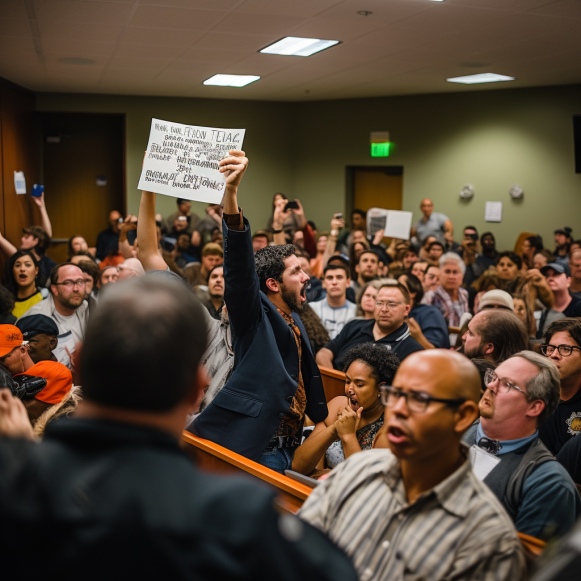Southern California tops wildfire risk rankings as insurance gets harder to find

Nation’s top spot for wildfire risk is Riverside County. LA is No. 2. Then comes San Bernardino.
Three Southern California counties have the highest wildfire risks in the country, and getting insurance to protect property is becoming increasingly difficult.
According to a First Street Foundation report, an increasing number of Americans are finding it difficult to afford home insurance, a problem that is only expected to worsen because insurers and lawmakers have underestimated the impact of climate change.
According to the report, Riverside County is the most dangerous place in the country for wildfires. In today’s terms, the risk equals the destruction of 1,612 structures worth $1 billion per year. In 30 years, that will increase to 2,336 worth $1.5 billion.
Los Angeles County came in second, with annual losses of 1,450 structures worth $1 billion expected to increase to 2,272 structures worth $1.6 billion in 30 years. San Bernardino County came in second, with 801 structures worth $484 million at risk, rising to 1,290 structures worth $768 million in 30 years.
According to the report, states like California, Florida, and Louisiana, which are all prone to wildfires, damaging storms, and flooding, are likely to see the most dramatic increases in premiums. However, the Aug. 8 fire that destroyed the Hawaiian community of Lahaina, as well as the historic flooding that occurred in Vermont and Maine in July, are examples of events that could raise insurance costs for homeowners in other states.
“If you’re not worried, you’re not paying attention,” said Bill Dodd, a state senator from California whose district includes the wine-country counties ravaged by the LNU Complex fires in 2020.
In its report, First Street estimates that roughly 39 million properties — roughly a quarter of all homes in the country — are underpriced for the climate risk to insure those properties, based on climate models.
“Some places may be impacted very minimally, but others may see massive increases in insurance premiums in the coming years,” said Jeremy Porter, co-author of the report and head of climate implications at First Street.
For years, First Street, a non-profit based in New York, has been a go-to source for information on the financial implications of climate change. Fannie Mae, Bank of America, the Treasury Department, and others use their research to better understand property risks.
There are numerous indications that climate change is having an impact on the insurance industry. According to credit rating agency AM Best, the homeowner’s insurance industry in the United States has experienced three consecutive years of underwriting losses. Losses for the first half of 2023 totaled $24.5 billion, roughly the same as losses for the entire year of 2022.
“(Climate change) is a problem that is already here,” said Todd Bevington, managing director at insurance brokerage VIU by HUB. In his 30 years of insurance experience, he stated, “I’ve never seen the market turn this quickly or significantly.”
The cost of paradise
The small town of Paradise in Northern California, which was nearly wiped out by a deadly 2018 wildfire that killed 85 people, is concerned about rising insurance costs.
Jen Goodlin and her family returned to their hometown from Colorado in 2020, determined to aid in the town’s recovery. They started construction on a lot they had purchased and will move into their new home in October 2022. She was surprised to learn in July that the family’s homeowner insurance premium would be $11,245 — up from $2,500.
“Our insurance agent said, ‘Just be thankful we didn’t drop you,’ and I said, ‘You did, you just dropped me,'” she recalled.
Goodlin, a former dental hygienist who is now executive director of the nonprofit Rebuild Paradise Foundation, said the rate hikes are affecting hundreds, if not thousands, of people in a town being built with updated fire-safe building codes and little, if any, fuel to burn. She knows a homeowner whose premium for a newly constructed home is now $21,000.
A record number of Americans are now insured through state-affiliated “insurers of last resort” such as California’s FAIR Plan, Louisiana’s Citizens, or Florida’s Citizens property insurance companies. These programs were created to insure properties that private insurance companies had refused to insure or where the cost of private insurance was prohibitively expensive.
Goodlin will be one of those homeowners soon. She stated that she is in the process of implementing the FAIR Plan.
In 2021, the number of homeowners covered by California’s FAIR Plan was 268,321, nearly doubling from the previous year. According to experts, this figure has almost certainly increased in the last two years. Citizens Property Insurance Corp. now has 1.4 million homeowners’ policies in force in Florida, nearly tripling in five years.
In some cases, policymakers have tied insurance companies’ hands, resulting in risk underpricing. For example, a California insurance company is only allowed to raise a homeowner’s premium by 7% per year without holding a public hearing, which most insurers prefer to avoid. Because of these policies, as well as the increased likelihood of catastrophic events, insurers such as State Farm and Allstate have either exited the California market or paused underwriting new policies.
As a result, California’s FAIR plan, developed 50 years ago as a temporary stopgap measure for those affected by riots and brush fires in the 1960s, is now the only option available to homeowners in some ZIP codes.
“We’ve got to find a way to get insurers to get back into the market, to take people out of the FAIR Plan so that we can reduce the risk there,” Dodd stated.
Dodd was one of the key lawmakers attempting to negotiate a bill to address the issue in the final weeks of the state’s legislative session. However, all parties were unable to reach an agreement.
More insurance market failures are likely in the future, according to Porter, as more insurers simply refuse to underwrite policies in specific communities or go property by property. Comparisons to the National Flood Insurance Program, which is now in debt to the tune of $22.5 billion, have become common.
Risk remuneration
Even the backup programs are suffering from massive losses. Citizens, Louisiana’s last-resort insurer, raised its rates by 63.1% statewide for 2023 to cover higher costs.
Reinsurance companies such as Swiss Re and Munich Re raised their property catastrophe reinsurance premiums in the United States by an average of 20% to 50% this summer. Guy Carpenter & Co., a reinsurance brokerage firm, said it was the largest increase in reinsurance rates since the year after Hurricane Katrina devastated New Orleans and the Gulf Coast.
“It’s a global issue.” “Risk is being repriced in virtually every geography,” said Lara Mowery, global head of distribution at Guy Carpenter, in an interview.
Reinsurers step in to help cover losses caused by a disaster, allowing regular insurance companies to avoid taking on all of the risk. A $20 million contract, for example, could require the insurance company to cover the first $10 million in claims and the reinsurer to cover the remaining $10 million.
Mowery went on to say that many reinsurance companies are now devoting resources to researching the impact of climate change on how to price catastrophes.
Other factors have also had an impact on the insurance industry. Inflation has increased the cost of home repairs, and home prices remain near record highs. Due to a labor shortage, repairing damaged homes may take longer, requiring insurers to pay for temporary housing for policyholders for a longer period of time.
In short, an industry whose business model relies on past events to calculate risk is increasingly unable to do so.
“You can no longer rely on 100 years of wildfire data to price risk when the unprecedented has happened,” Mowery stated.
While the intensity of wildfires, floods, and storms varies from year to year, the trend lines in these models point to increased wildfire activity as well as more intense storms, all of which are likely to result in larger amounts of damage that insurance companies will have to cover.
First Street estimates that by 2050, approximately 34,000 homes will be destroyed by wildfires due to climate models and acres estimated to be burned. That’s roughly the same as losing the city of Asheville, North Carolina, every year.
Due to the possibility of significant rate hikes in the future, it may become more necessary for prospective homebuyers to consider the cost of insuring the property they are considering before locking in a mortgage rate in the future.
“It used to be that homeowner’s insurance was an afterthought when looking to buy a home. “You’ll need to do your homework on what risks may exist in that property in the coming years,” Bevington said.




